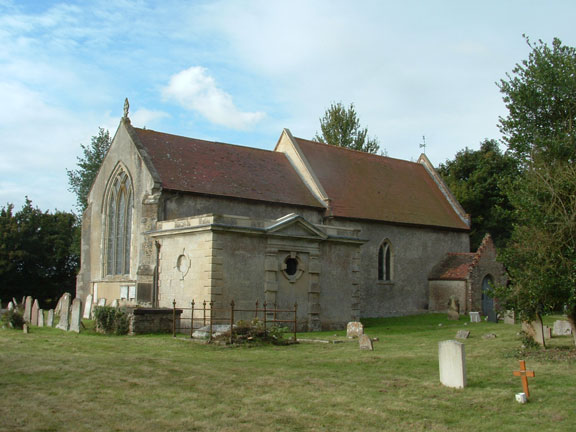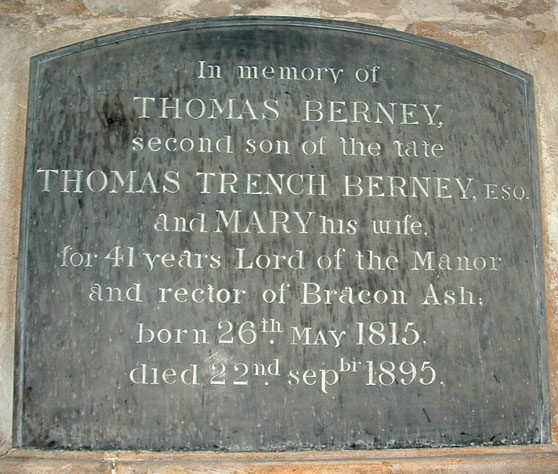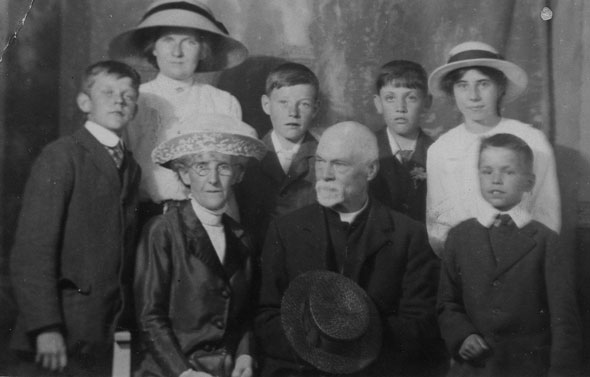Rectors
of the Parishes

Rectors of Bracon Ash
(Names with a (b) are known to be buried in the church;
there is further information below on those marked * )
1322 Master Thomas de Morle 1661 Thomas Tennison *
1335 Nicholas de Lymburgh 1662 John Tennison
1349 Roger Mondegome (b) 1671 Roger Stanhawe
1372 William Cowper 1683 William Bedingfield (b) *
1374 Sir John Pygot 1694 Peter Coppen
1400 Robert Erpingham * 1728 Sam Gunning
1445 Sir Robert Blount 1750 Thomas Money
1466 Sir John Everard 1785 Thomas Taylor *
1490 John Elnysch * 1801 John Mackenzie
1515 John Marshall 1815 Thomas Slapp
1518 Hugh Swift 1844 John Leatherdale
1558 John Norton 1854 Charles Penrice
1565 John Daynes 1856 Thomas Berney *
1581 Rowland Browne 1895 Walter Morgan
1582 Robert Maister * 1897 Mark Robinson *
1606 John Morland (b) 1933 J E Wynne Roach *
1649 Richard Johnson (b) 1936 Thomas Williams
1660 Richard Waddelow 1947 Thomas A Frost *
Rectors of Bracon Ash & Hethel
1957 David Main 1981 Henry Brierly
1974 Horace Busk 1988 Keith Crocker

Rectors of Hethel
(Names with a (b) are known to be buried in the church;
there is further information below on those marked ** )
1312 Arnald Lupi de Tillyo ('an Italian')
1320 William de Skothow 1619 Robert Witherel
1345 John Radulphi 1658 Edmund Allen (b)
1357 John Jay 1683 Samuel Hancock A.M.
1383 Sir John de Trodesham 1697 Richard Branthwait **
1427 Robert Gournay 1737 John Reddington (b) **
1444 John Gosse 1739 John Lombe
1446 William Halyday 1743 Rev. Mr. Metyer Reynolds
1457 Edmund Woodrove (Rector at the time when
1463 Robert Coppin Francis Blomefield was
1469 Jeffery Hert ** researching Hethel)
1482 Robert Hawys, alias Wakerly 1754-92 Arthur Branthwayt**
1490 John Rede 1779-1835 Miles Beevor **
1544 Sir Nicholas Reyner 1835 Henry Steward (d.'91)
1554 Henry Cumbreford S.T.B. 1891 Herbert H J Steward**
1558 Oliver Hayber (to 1948, when Hethel was
1559 Sir Robert Sterling ** united with Bracon Ash
1618 Henry Townley under Rev Thomas Frost )
Bracon Ash & Hethel were first moved into the Wreningham Group of Parishes - under Henry Brierly and then Keith Crocker. Then they were moved into the Mulbarton Group under Rev Jess Stubenbord.
Notable Rectors of Bracon Ash
* Robert Erpingham
A friar from Norwich, and brother of Sir Thomas Erpingham (1357-1428) who played a pivotal role in the victory at Agincourt in 1415 and is immortalised in
Shakespeare's play 'Henry V'. His shield is on the gate (c.1420) that bears his name leading into the Norwich Cathedral precinct. Some historians believe a sister of Robert became an anchoress - St Julian of Norwich.
* John Elnysch
Abbot of St Mary de Pre in Creyk (Creake Abbey) and Rector
of Bracon Ash. For the privilege of holding these posts he had to send the King
one pound of pepper each year.
* Robert Maister
In 1603 made a Parish Return stating that there were 92 communicants (Blomefield)
* Thomas Tennison
Archbishop of Canterbury 1695-1751. During his time in office he crowned two sovereigns, Queen Anne and King George 1. Amazingly, his coffin was recently discovered beneath the floor of the former church next-door to Lambeth Palace, London, which is now the home of The Garden Museum. When trying to level the floor, builders made a hole into a vault under where the altar had been, containing 30 lead coffins, one with an archbishop's mitre on top and several with nameplates. Matching the finds with records of the church revealed that one of the coffins belongs to Thomas Tennison! [More on this story at BBC, and Sunday Telegraph.]
* William Bedingfield

Came from Ashwellthorpe. He was buried in the chancel in 1694 and his ornate memorial, with a long Latin inscription, is above the door into the Berney mausoleum (and thus above the remains of the alabaster monument that may have links with his family).
of Humphrey of Wighton
in the Land
of Norfolk, Gentleman,
fourth begotten son
much-beloved Rector of
this church
[then six lines about his love of learning]
Here
also is placed
ELIZABETH his most
beloved wife
daughter of THOMAS WOOD
Esquire
a woman distinguished
for her uncommon qualities of devotion
scarcely three months
outliving her husband
who died
11 April in the year
of the Lord 1694
* Thomas Taylor


We know little about Rev Thomas Taylor but we do have his signature - and information on his churchwardens! The 1798 Bishop's Transcript (a copy of register entries sent to the Bishop annually) is signed by Thomas Taylor and by his churchwarden, Robert Green (above, top picture). Robert was churchwarden of Bracon Ash from 1797 until his death in 1798. His son, Oakley, became churchwarden after his father's death, and he signed the 1799 Bishop's Transcripts above, lower picture). Oakley Green was churchwarden to 1803, and he died the following year. Both Robert and Oakley are commemorated on a memorial in Flordon churchyard where their wives are buried.
[Source: Norfolk, England, Transcripts of Church of England
Baptism, Marriage and Burial Registers, 1600-1935]
* Thomas Berney
Rector for 39 years from 1856 to 1895. He lived in Bracon Hall and exercised his rights as Lord of the Manor - sometimes too zealously. More about that under the Berney family! He was a prolific writer on theological subjects, although his less-than-snappy titles give a hint to the verbose and eccentric contents (above - from abebooks.co.uk). He is buried in the Berney Mausoleum.

* Mark Robinson....
....came to Bracon Ash a couple of years after the eccentric Thomas Berney had died, and stayed in post for over 35 years. He oversaw the refurbishment of the church. Gladys Watling remembered him as 'A scholarly man; he wrote a
small book on 'How to tell the time by the sun'. His method of conducting
services in church was 'Low' style and he even changed his surplice for a black
gown for preaching the sermon.
He used to visit his parishioners on a Friday afternoon and give them half a crown. I don't know where the money came from - was it 'Alms for the poor' taken at the service of Holy Communion, and an old Charity or was it from his own private pocket?' ('Within Living Memory', Gladys Watling)
* J E Wynne-Roach

* Thomas A Frost

L>R: Dr Fletcher; Rev Frost; Miss Berney + (order unknown) Mrs Frost, Mrs Walter, at Bracon Lodge
Mr Frost came to Norfolk
from Gloucestershire to be priest-in-charge of Surlingham in 1935. From 1937 to
1947 he was Vicar of Bawburgh and Little Melton, where he served first as a Home
Guard officer and later as an A R P officer. He was also a member of Forehoe
and Henstead RDC.
[It was during his incumbency that the parishes of Bracon Ash and Hethel were joined.]
Both Mr and Mrs Frost are musicians and have formed musical
groups wherever they have lived, providing extra music for services and
entertainment when retired. As trumpeter and priest, Mr Frost has frequently
both conducted memorial services and sounded the Last Post and Reveille.
On moving to Bracon Ash Mr Frost responded to a general
request for a district parish magazine by purchasing printing apparatus and
producing a magazine under the title of "Neighbours". This supplies seven
villages with parish news and has reached a circulation of 450 copies a
month.... He left Bracon Ash to become Rector of Northill in the St Alban's Diocese. (From EDP Report)
Notable Rectors of Hethel
** Jeffery Hert, 1469-82
'A monk, who was licensed by
the Pope to hold it, notwithstanding he was a monk; in 1474, having thrown by
his habit, on his being outed from this living by reason of it, he obtained
another Pope's dispensation from his habit and all monastick rules, and so
becoming a secular,
he was re-instituted, and resigned in 1482.' (Frances Blomefield)
** Robert Sterling, 1559-1618
Previously Chaplain to the Duke of Norfolk (who gave him the post). In 1603 he returned answer, that Miles Branthwait, Esq.
was patron of his living, and that he had 46 communicants in his parish.
** Richard Branthwait, 1697-1737
Presented to the living by his father, William Branthwait, Esq.
** John Reddington, 1737-1739
Also Rector of Rackhythe (? Rackheath) and held both livings. Master of Norwich Grammar School. He was appointed by Miles Branthwayt because he shared his patrons strong Jacobite sympathies, and was involved in his project to add a mausoleum. It is John Reddington who rebuilt the chancel which presumably
had fallen into poor repair, and inserted "a handsome Venetian window"
at the east end and the windows in both chancel and nave were simple sashes. He also improved and 'beautified' Hethel Rectory - although it was not good enough for Miles Beevor, a later incumbent. John Reddington is buried under a black marble slab in the aisle:

** Arthur Branthwayt 1754-1792
The nephew of Miles Branthwayt, Arthur was born in 1729 to John
Branthwayt, the Rector of Kettlestone and Elizabeth nee Webb. He was
baptised in Norwich 16th April 1730 and educated at Holt school
before going to Caius College in 1747. He obtained a BA in
1750 and an MA in 1754.
Arthur was ordained deacon in Norwich in 1753 as curate of
Kettlestone. He was ordained priest in Norwich in
July 1754 and became Rector of Hethel from then until his
death in 1792. This position had been stipulated in the will of Miles
Branthwayt which made Arthur's brother, also called Miles , a joint
beneficiary with Elizabeth Branthwayt (wife of Thomas Beevor).
Arthur also became Rector of Rainham St Margaret and St Mary from
1766 - 70 and of Morton and Stiffkey from 1769 - 1792.
Arthur married Jane Barwick in Aylsham on 4th April 1758. Arthur and Jane had eleven children but the majority had short
lives. The children who died young included John 1761, Julian in 1765,
Arthur in 1766, Miles in 1768, Elizabeth, Juliana and Dorothy all in 1771,
Anne in 1783 and Arthur in 1809.
One daughter, Jane born in 1763, married George Beevor (son of Thomas
Beevor and Elizabeth Branthwayt) in Stiffkey in May 1791 and went on to
have a family of nine children. A second daughter, Mary born in 1770
married Arthur, George Beevor's older brother, in June 1797 at Newton
Flotman and subsequently had a family of four children.
Arthur died on 30th August 1792 in Stiffkey. Jane, his wife, lived until 1813 and was buried in Hethel on 13th May that year.
** Miles Beevor D.D., 1779 (curate) -1835
Miles was born on October 22nd 1756 and christened at Hethel
Church on November 14th. He went to University College Oxford in
1774, taking a B.A. in 1778, an M.A. in 1781 and was made a Doctor
of Divinity in 1815. He was ordained deacon on 21 December 1778 and became curate of Hethel Church (his cousin once removed Arthur Branthwayt holding the position of Rector - see above). He was ordained priest on 26th May 1782 by the Bishop of Norwich, Philip Yonge. Following Arthur's death in
1792 he became Rector of Hethel on 4th October that year and
held this post until his death in December 1834. He also held the posts of Vicar of Tofttrees (1784-5), Vicar of South Creake(1784-5), Vicar of Ketteringham (1786-1835) and Rector of Bircham Newton (1789-1835).
On 17th March 1791 at St. Saviour's Church, Norwich, Miles married his
cousin Mary Beevor, the daughter of James Beevor (the youngest brother
of Thomas Beevor). They were given permission from the bishop to set
up home in Mulbarton as Hethel no longer had a rectory. He 'lived for a considerable time at Mulbarton House, now Mulbarton Hall.' He is listed as a 'freeholder' and therefore a voter, in the Norfolk Poll Books of 1802, 1806 and 1817. 'It is said that the village blacksmith who had a feud with him, named his dog 'Miles Beevor' that he might curse him to his heart's content and at the same time declare that no disrespect to the Rector was intended' [quoted in 'Mulbarton with Ketteringham some notes and remarks' by ARV Daubeney c.1932]
Miles had also became an army chaplain, a JP and in 1803 a Deputy
Lieutenant of Norfolk. In November 1834 Miles officiated at a final
funeral in the parish before he himself died in December and was
buried in Hethel on 5th January 1835.
** Henry Steward,
Henry Steward was another rector involved with building work. He rebuilt the Rectory (now Moat House) in 1866 and is described in directories of the day as "a
large handsome house" with four picturesque bridges over its moat.
He also inserted three new
windows in the chancel in 1882, 'mercifully without the customary stained or
tinted glass, and opened the Branthwayt family chapel to the church by two
pointed arches...'
** H H J Steward, 1891-1948 (dates to be checked - his predecessor d. 15 May 1891)
The last Rector of the independent parish of Hethel. 'He had distinct high church leanings,
introducing the present rare type of altar which, with its marble top, is an
example of late Tractarian restoration. It is worth taking a close look at this
fine slab of marble with its beautiful markings. He also installed a sanctuary
bell and lamp and, to the horror of at least one surviving parishioner, a thick
red curtain that totally obscured the east window.' (Church Guide by Richard Wilson)
